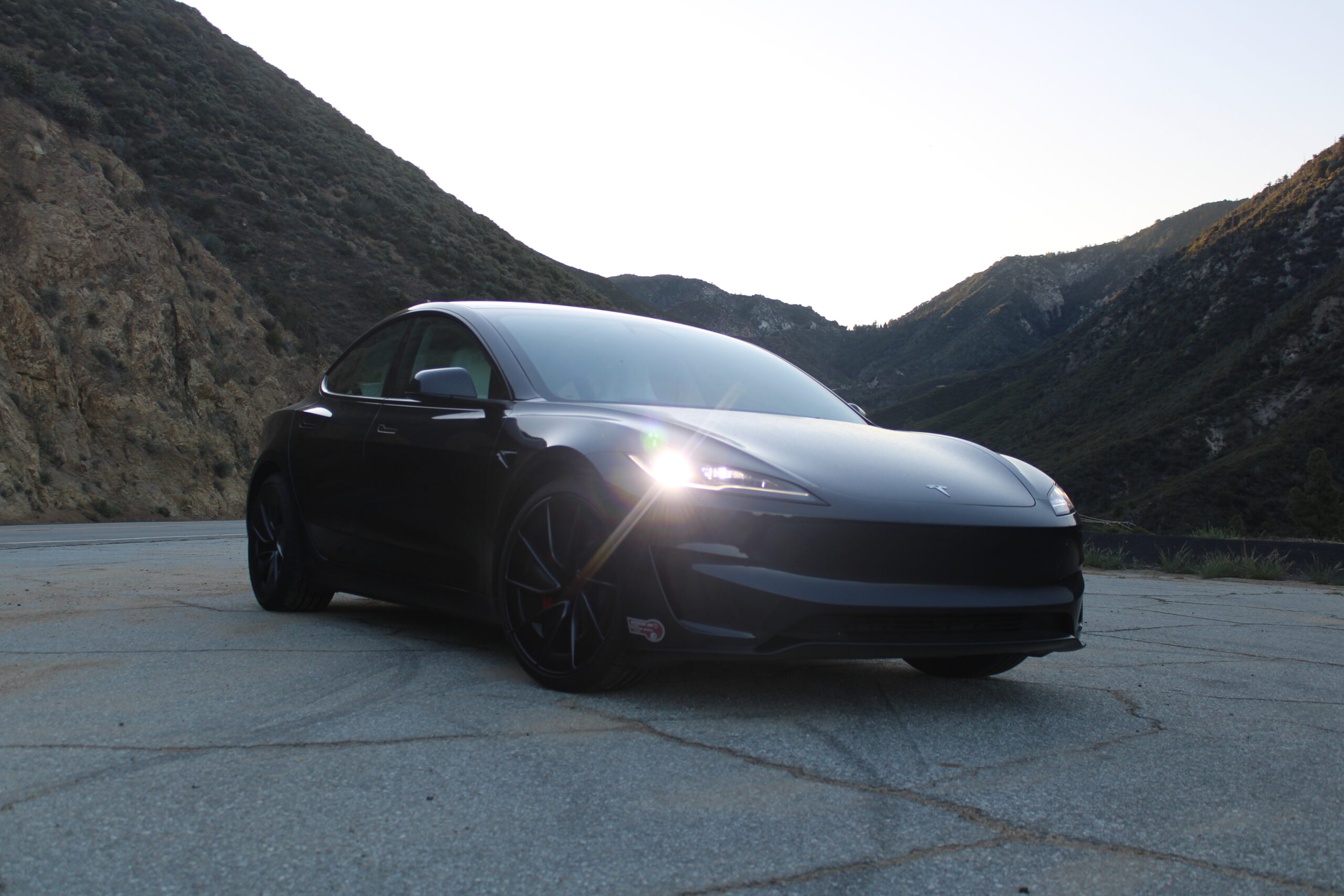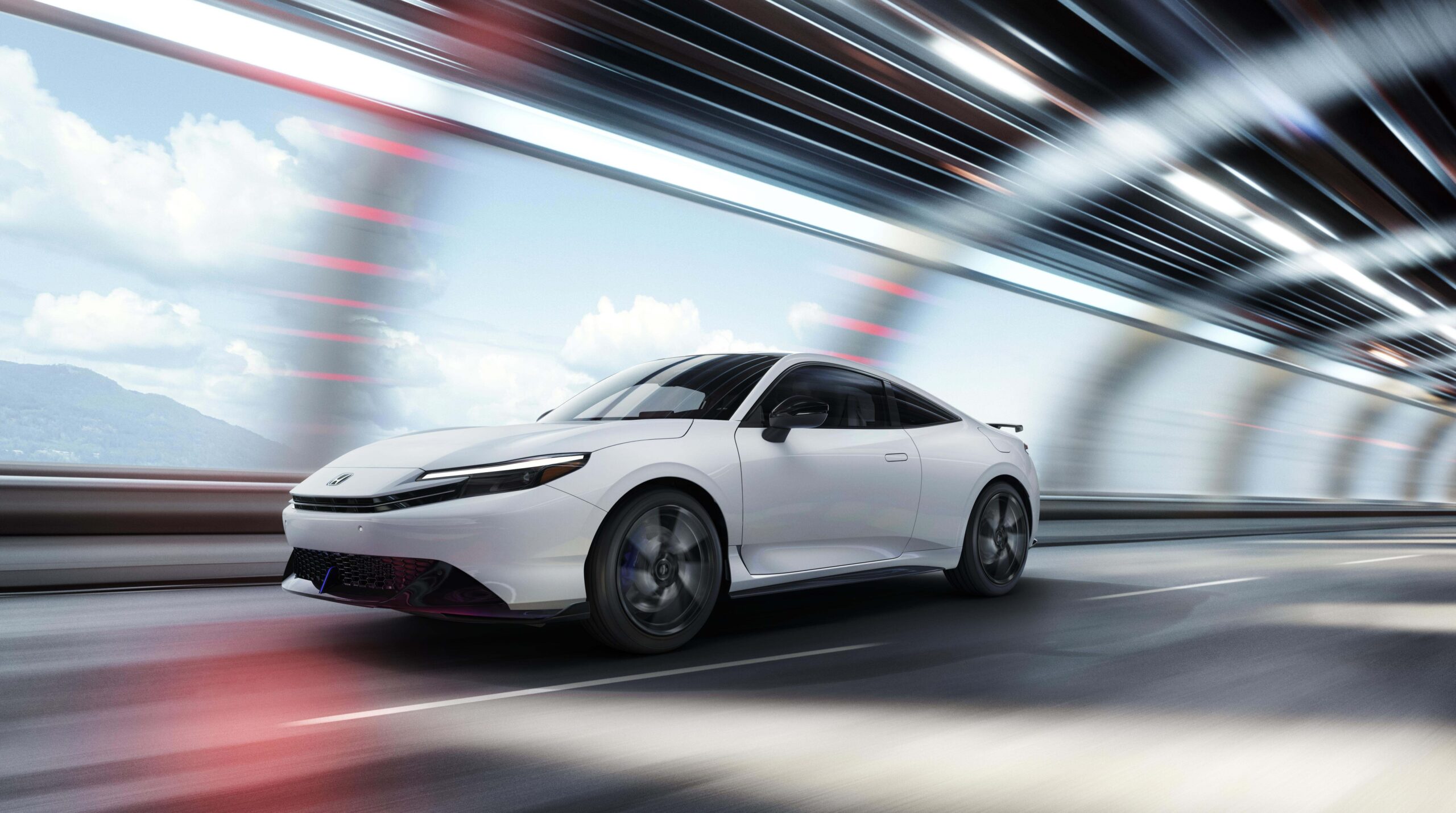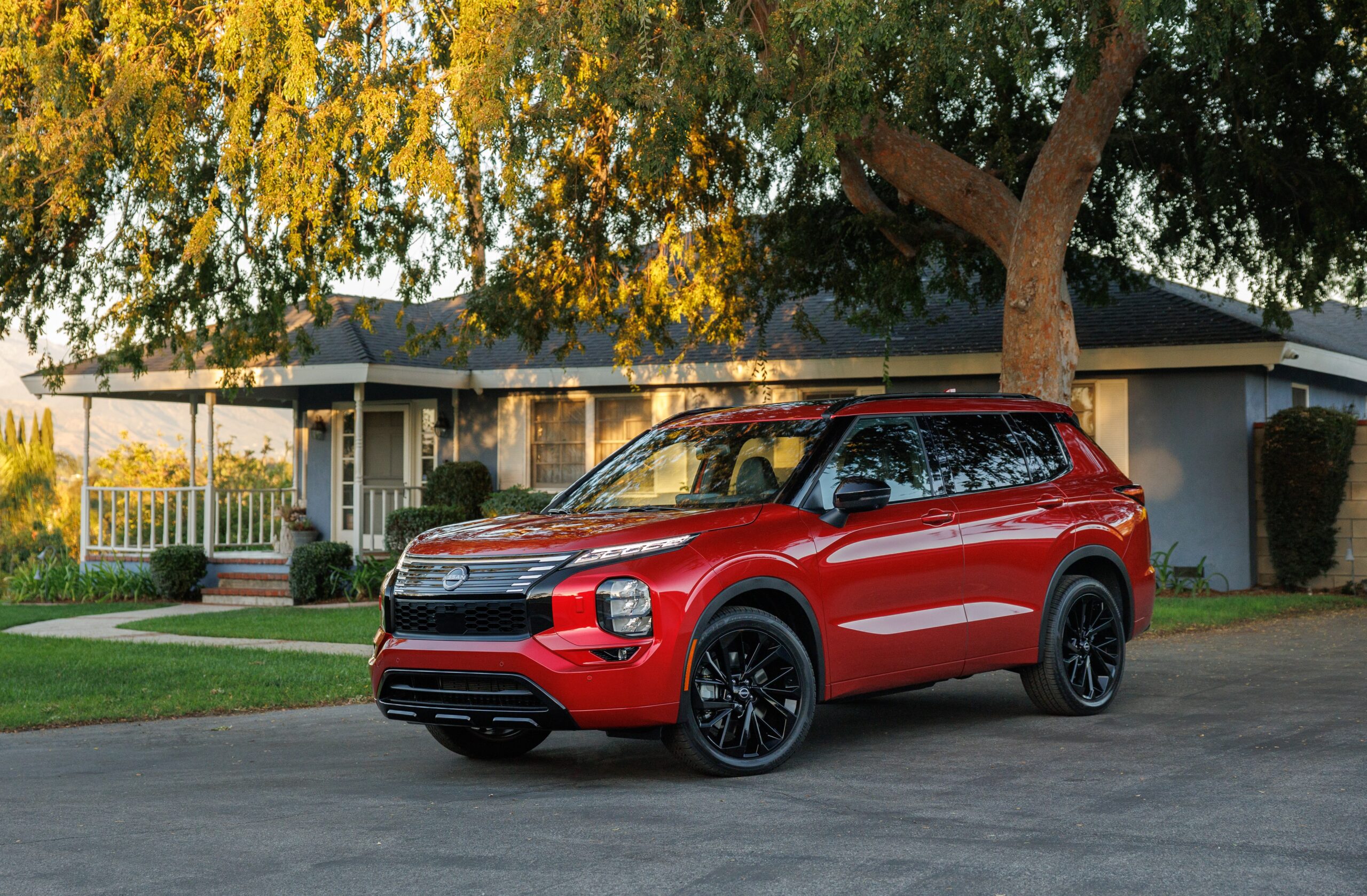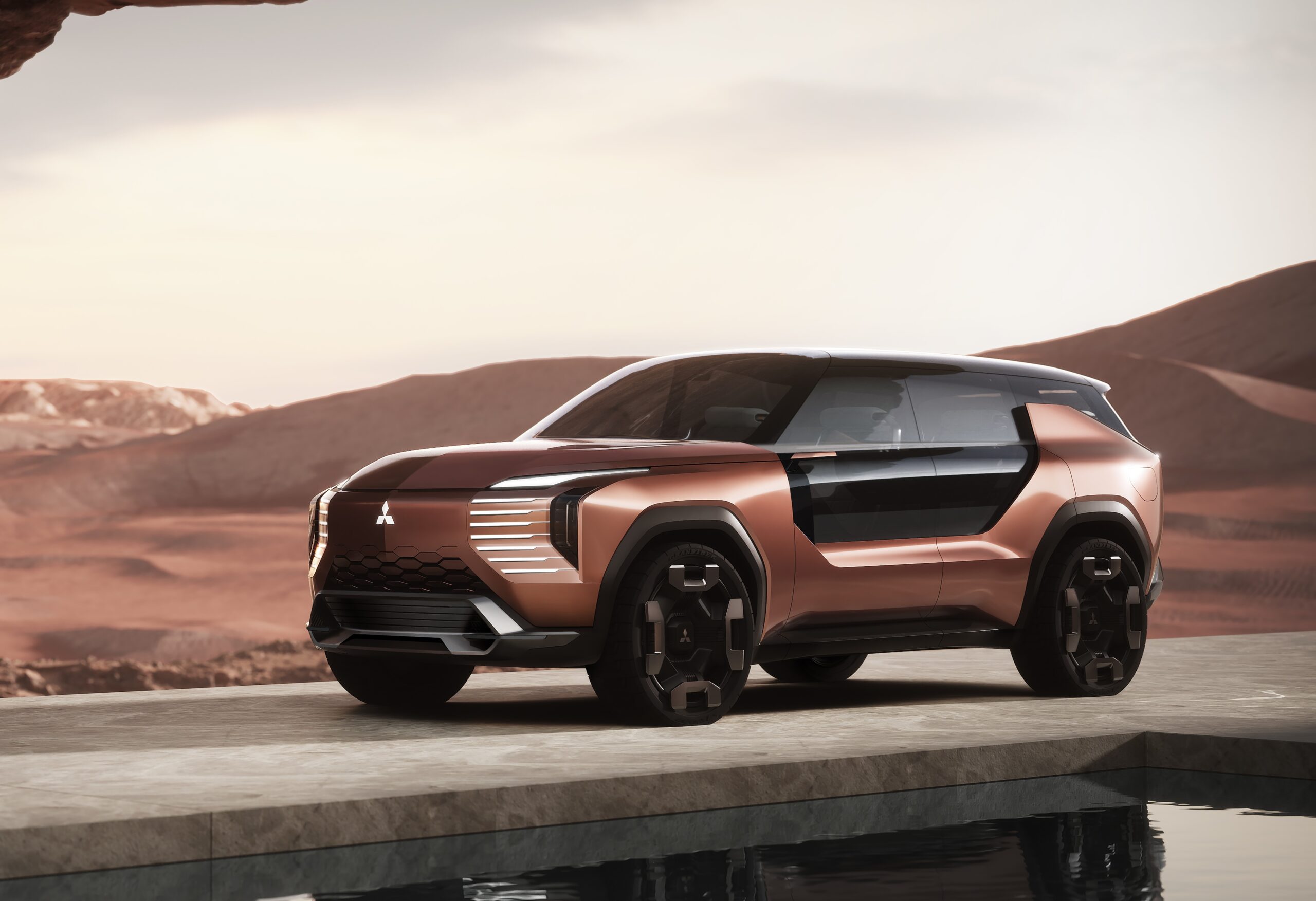The word performance is a loaded one. Use it to describe a car, and it immediately raises people’s expectations, especially driving enthusiasts. If the vehicle that word is attached to is a battery-electric vehicle, curious minds are piqued even further, and that’s why the Tesla Model 3 Performance is such an interesting entry among electric sport sedans. It comes from the most established EV maker, and it’s promising a lot for not much money. Let’s take a deep dive and see if the hottest version of this EV lives up to the hype.
Tesla Model 3 Performance: Effortless Speed
To no one’s surprise, the Tesla Model 3 Performance is QUICK. 0 to 60? 2.9 seconds. No launch control needed. This puts it squarely in supercar territory in terms of acceleration. Featuring two electric motors on each axle, this svelte sedan makes 510 hp and 546 lb-ft of torque. That means instant power that can get you into triple-digit speeds with little effort. Put the powertrain in Insane mode, floor the accelerator, and feel the sudden burst of power slam you into your seat with authority, giving you that feeling like you just got launched into space like a SpaceX rocket. Ready to wind down? Select Chill mode for effortless acceleration that’s less frenetic and more ideal for the daily commute, giving the Model 3 a dual personality: relaxed but not afraid to show off its prodigious power.
In terms of range, the EPA rates the Model 3 Performance at 298 miles on a single charge. You’ll get that in the real world if you drive responsibly and at legal speeds. Otherwise, expect closer to 250 to 260 miles. When it’s time to top up in public, the Model 3 Performance can recover 142 miles in 15 minutes under ideal conditions. Plus, the peak DC charge rate of 250 kW helps you get the most out of every Supercharger session.
Grippy and Snappy
So the power lives up to the performance moniker. What about the chassis and the rest of the vehicle? Well, that’s a different story. Let’s start with suspension. Tuned specifically for the Model 3 Performance, it features adaptive dampers that provide the perfect balance between comfort and agility. That means an incredibly supple ride over all types of road surfaces, despite the standard 20-inch wheels shod in wide performance tires (235 front and 275 rear). Selecting the sportier modes gives the Model 3 Performance a planted feel since it mitigates body roll to the point where it’s nearly non-existent. However, things fall short in the steering department. No matter what mode you’re in, this car feels disconnected. While changing to sportier modes adds steering weight, it still feels uncommunicative, which does not inspire confidence when driving enthusiastically on your favorite winding roads.
Then there’s the AWD system. Like many EVs on the market that offer four-season traction, the Model 3 Performance is rear-biased, and you feel it immediately. It loves to rotate and frequently overdrives the rear motor to get you around corners. However, in more aggressive drive modes, it tends to ramp up the rear motor too much, resulting in snap oversteer. Even with all that grip, the Model 3 Performance still has a penchant to go sideways, and it doesn’t help that it feels so disconnected. In a way, all of that power is just a party trick. It’s great to show off in a straight line, but it doesn’t quite add to the overall experience. The upgraded brakes, while fine for normal driving, don’t inspire confidence when driving hard, a feeling exacerbated by a stiff pedal.

Tesla Model 3 Performance: Sleek and Minimalist
Tesla’s design is all about modern minimalism. Thin LED headlights and reshaped taillights highlight the key changes for the Model 3 “Highland” refresh. Together with its sleek silhouette and revised front fascia, this sedan is a looker. That theme continues inside, where you’ll find a single 15.4-inch touchscreen handling nearly every function, and a steering wheel devoid of stalks. While it looks techy, this layout has a learning curve. Yes, the software is top-notch, but its functionality is not. Don’t even ask about Apple CarPlay or Android Auto. Neither one is available. On the plus side, the 17-speaker premium audio system just rocks, offering incredible clarity and crispness.
As for usability, the Tesla Model 3 brings plenty. The trunk is huge by compact sedan standards, and you can also fold the rear seats down 60/40, which adds to its versatility. There’s also a usable frunk and plenty of storage for smaller items. Two wireless chargers are also conveniently placed on the center console for easy access and can charge smartphones quickly. In the rear, keep it to two since the center position is cramped. Build quality has improved over the outgoing Model 3, but it’s still more mainstream than luxury. You also get more wind and road noise on the highway despite the improved sound insulation.
Not Self-Driving
Unlike its name might suggest, Tesla’s driver assistance features don’t allow the Model 3 to drive itself. They’re just that: assistance. Their subtle nature highlights their seamless operation, encouraging drivers to keep active safety technologies on. However, they do have their quibbles. With Autosteer active, changing lanes requires turning Autopilot off and then reactivating it every single time. Additionally, it lacks a lane centering function if you’re using Autopilot only.
Now for the elephant in the room: Full Self-Driving (Supervised) or FSD. While it works well in most scenarios, it tends to make questionable decisions in others. These include constantly changing lanes on the freeway and getting so confused in city driving that it inched way too far out into an intersection. It’s best to use FSD only on the highway since it works best in that scenario. Just make sure to treat it as driver assistance because that’s what it is, not your private taxi.




Conclusion: Checks Many Boxes
The Tesla Model 3 Performance is an impressive machine that checks many boxes. It’s quick, packed with advanced tech, and has plenty of space for occasional passengers. Where it falls apart is being a driver’s car. While it has power and grip in spades, it lacks two major components: engagement and feel. Although the latter is harder to come by in a world where everything has electric power steering, the former isn’t. The Model 3 Performance lacks both, making it a sports sedan but not a driver’s car. While it does the go-fast and daily-driving supremely well, it does not connect with the driver.
Beyond the party trick acceleration, the Model 3 Performance is clinical and emotionless, making it less enjoyable to drive outside of the everyday commute. To truly appreciate it, it’s best to view it as a super-fast cruiser. A Hyundai Ioniq 5 N or Porsche Taycan will better serve you if maximum engagement and emotional connection. However, when price comes into the equation, the Model 3 Performance’s $55,000 price tag is hard to ignore. From all of the features you get to its crazy speed, it’s a lot of car for the money. Just make sure you’re fine with its robotic nature and lack of personality.


















One thought on “Tesla Model 3 Performance Review: A Sporty Robot?”
Comments are closed.